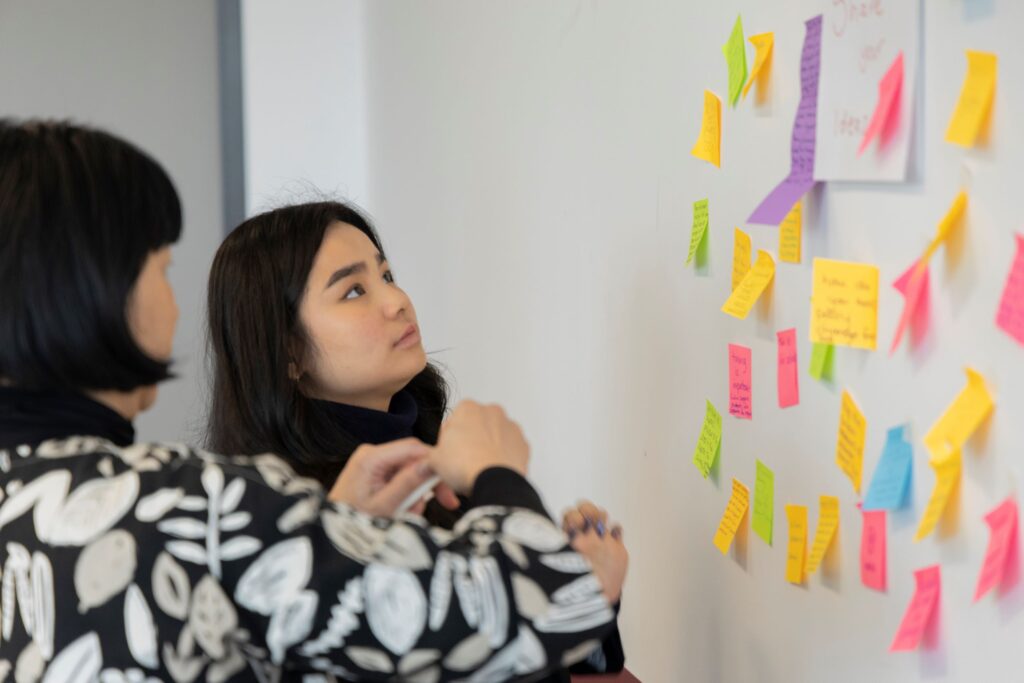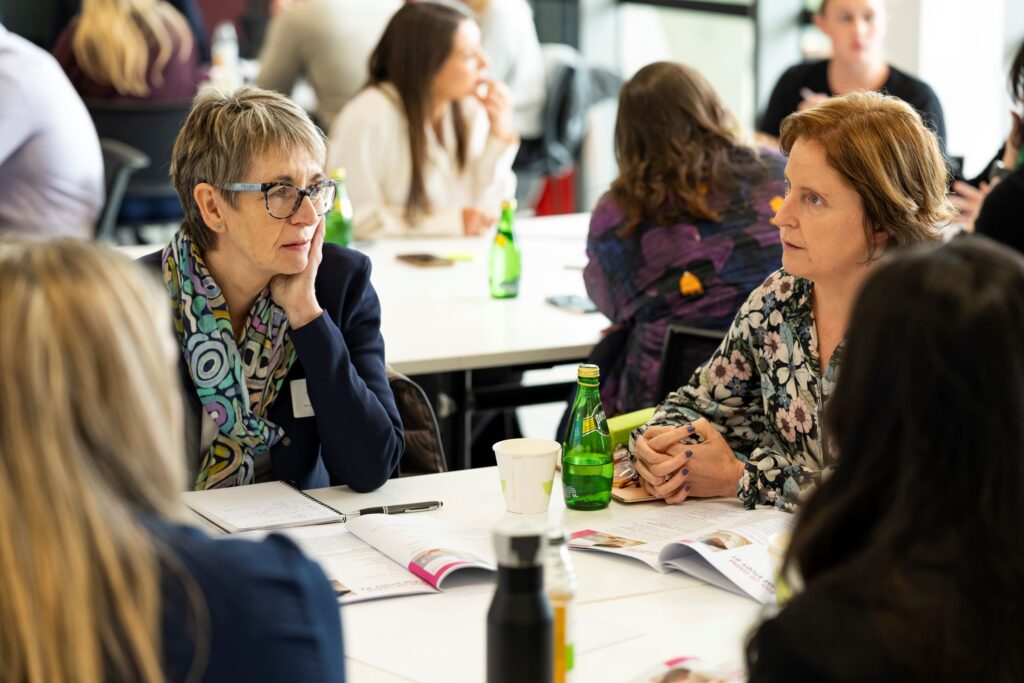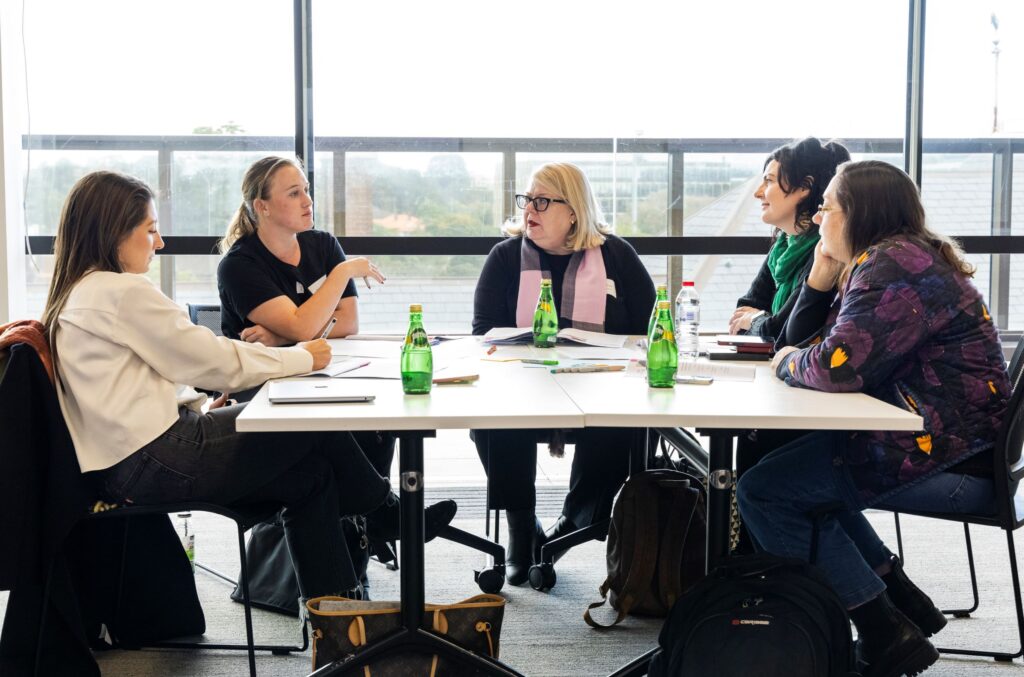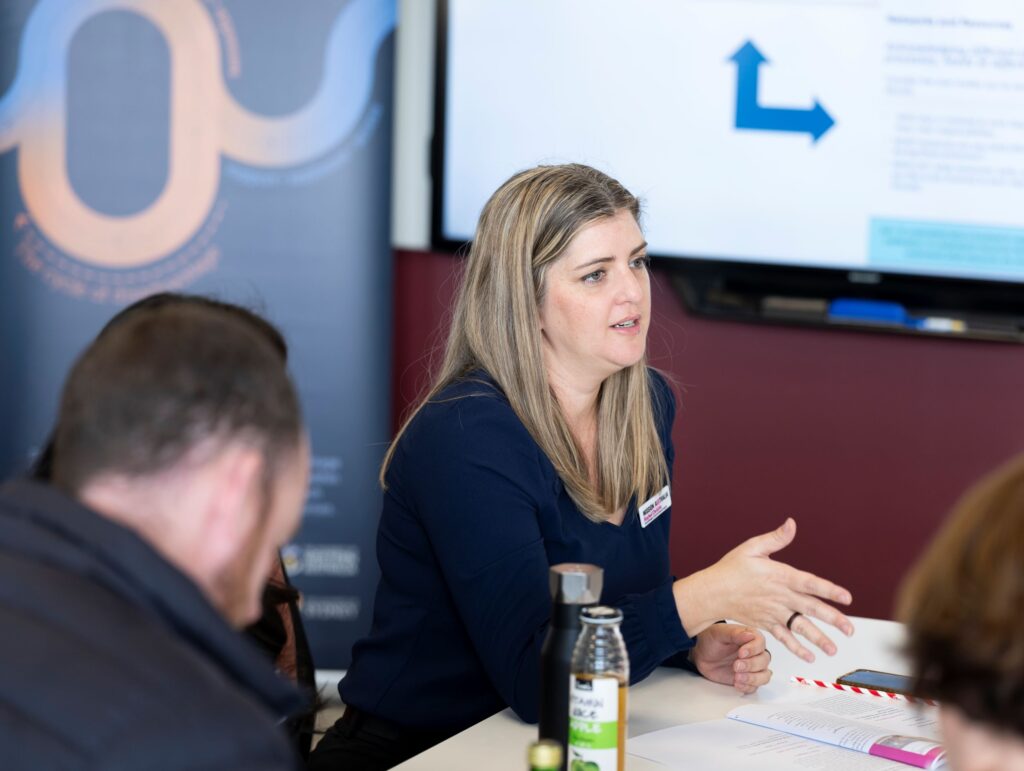Investigating how Australia’s largest nation-wide youth survey can be even more impactful was the focus of an intense two-day workshop hosted by the Life Course Centre and Mission Australia.


In late July, a group of researchers, youth-sector industry partners, school representatives and young people sat down to examine how the Mission Australia Youth Survey inbuilt well-being and risk of harm notifications provide a ‘bridge’ to appropriate supports for young people.
According to Life Course Centre Research Fellow and co-facilitator, Dr Alyssa Milton, the objective of the workshop was clear.
“Because Mission Australia do a huge amount of work to notify schools, we wanted to understand their risk notification process, and then co-design what else is needed to support teachers and schools,” Dr Milton said.
“We brought together a wealth of knowledge; people with different perspectives who can ensure the Youth Survey is so much more than data and statistics – that it can make a difference for young people.”
The annual Mission Australia Youth Survey is completed by more than 19,000 teenagers aged 15 to 19 with results helping schools, governments and policymakers gain valuable insights into young people’s thoughts, experiences, concerns and solutions.
Because young people may write down important details about concerns or issues in their lives, Mission Australia has a well-defined wellbeing and risk of harm process to identify and respond to anything that may suggest a young person’s safety or wellbeing is at risk.
According to co-facilitator, Mission Australia’s Rachel Christie, in 2023 around 4500 well-being notifications were issued to schools and community organisations.
“The question for me has always been what happens after these notifications are raised,” Ms Christie said.
“With the help of the Life Course Centre and the Academy of Social Sciences in Australia, we brought more than 30 people from across multiple states to collaborate and determine how we can better support schools so young people get the right care at the right time.”






Nothing was off-the-table during the two-day workshop with school representatives, academics and young people flooding the room with diverse experiences, passionate discussion and a range of innovative ideas.
“Everyone was so incredibly on board, on the same page, and had a shared vision,” Dr Milton said.
“People had different ideas that we could pull together, but at the same time there was consensus across what we needed to do and where we need to go.
“I think that speaks to the need and value of the initiative.”
“The co-design workshop helped raise a variety of amazing ideas from the workshop participants and prioritise them into what feels like manageable chunks, rather than an overwhelming list,” Ms Christie added.
The workshop marks a significant step forward in ensuring that young people receive the right care at the right time, reinforcing the importance of cross-sector collaboration in tackling youth well-being challenges.
Workshop participants said:
“During the co-design process, it became glaringly obvious that everyone had a deep passion for improving young people’s high school experience, and although we each have different contexts and experiences, our ideas began to overlap.”
Hannah Lambert – Batyr
“It has been fantastic to share ideas of how to improve implementation, processes and reach of the survey and I am leaving with renewed enthusiasm and actions to take back to my school to implement. I look forward to being part of future co-design workshops like this in the future.”
Jade Preedy – Wellbeing Coordinator, Kardinia International College
“The workshop reinforced the importance of the peer voice, and I’m grateful for the opportunity to represent young people based on my lived experiences.”
Zali – Mental Health Nurse